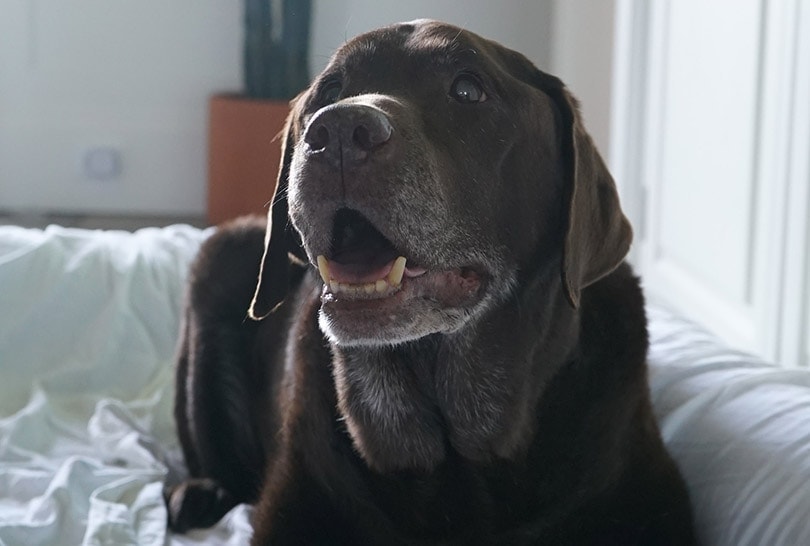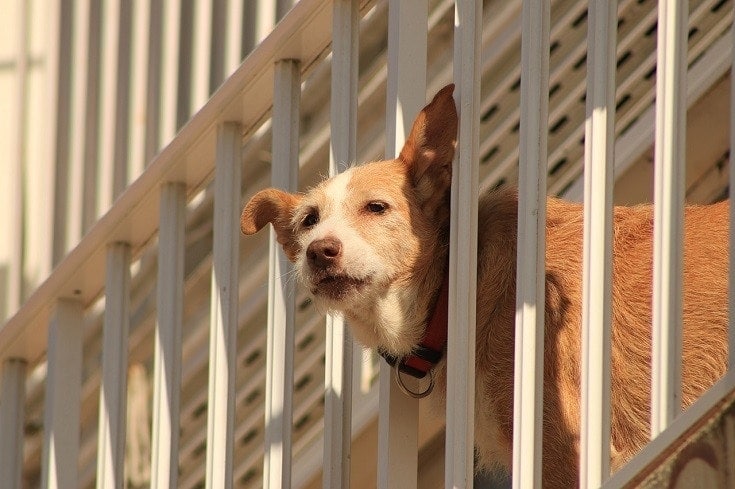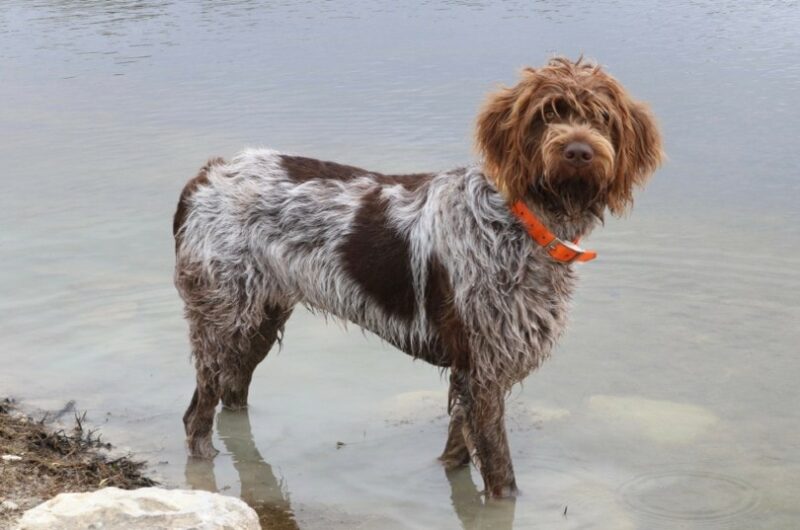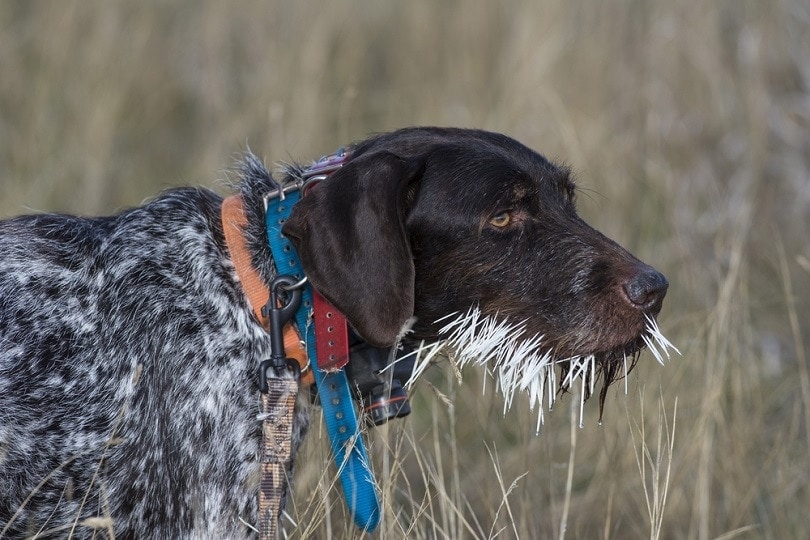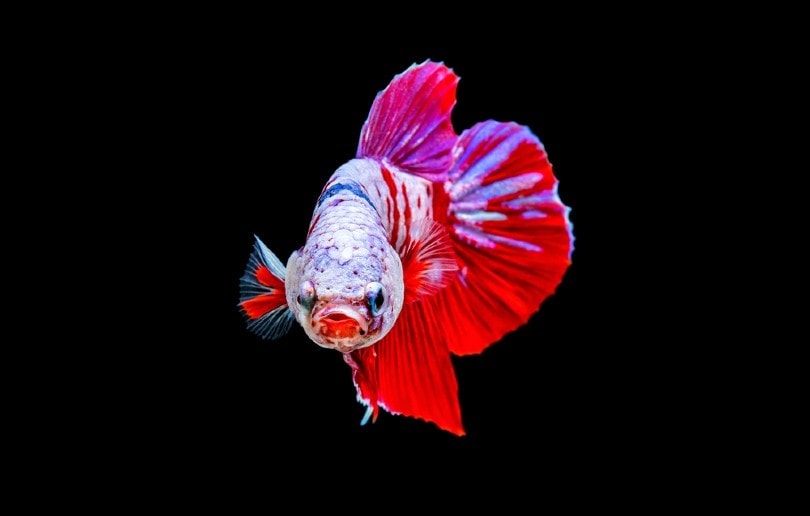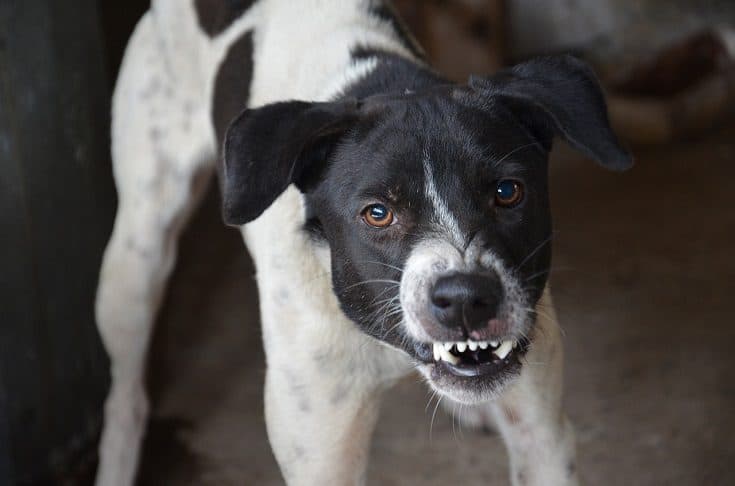18 Least Intelligent Dog Breeds That Aren’t Easy to Train: Vet Approved Guide
By Ed Malaker
Updated on
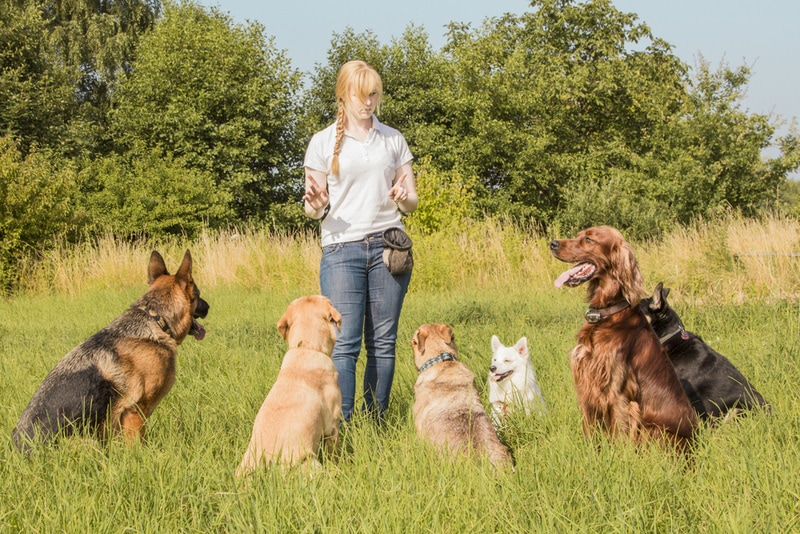
Click to Skip Ahead
While all dogs are good dogs, some aren’t as quick to pick up on new tricks as others, which can be a problem for owners who need them to follow certain commands. If you want to avoid breeds that are difficult to train, keep reading for a list of several of the least intelligent dog breeds so you can be better informed. We also answer frequently asked questions about dog intelligence.
Aren’t All Dogs Smart?
We should firstly clear up a point about canine intelligence. When talking about how intelligent a dog is, what we are really talking about is trainability; how well they pick up commands and retain that information.
There are certain breeds, particularly those that have been selectively bred for their ability to follow orders or perform complex tasks, that will rank highly in terms of intelligence. What is often overlooked are qualities such as loyalty, emotional intelligence, and attentiveness; qualities that are more difficult to evaluate and measure objectively.
So if your favorite breed is not counted amongst the most intelligent, or has found their way onto this list of “least intelligent”, do not be offended. Obedience and trainability are one measure of intelligence, but that doesn’t mean that these lower ranking breeds aren’t clever. They just show their smarts in other ways.
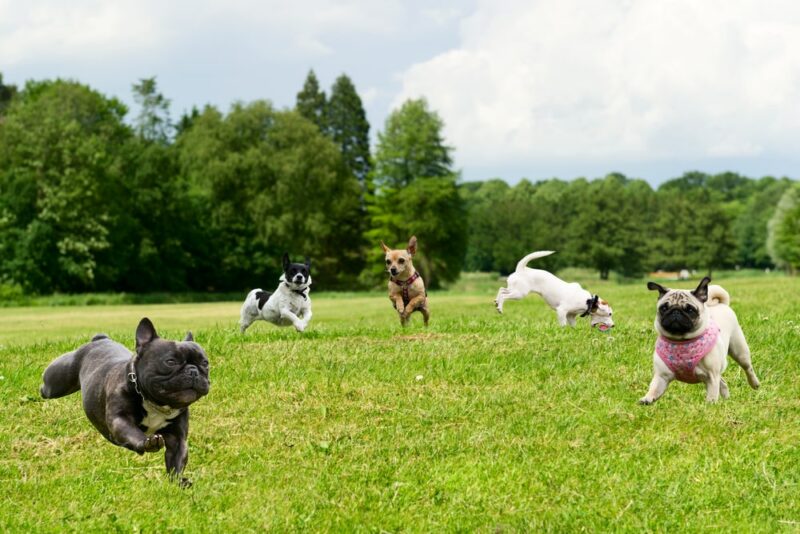
The 18 Least Intelligent Dog Breeds
1. Afghan Hound
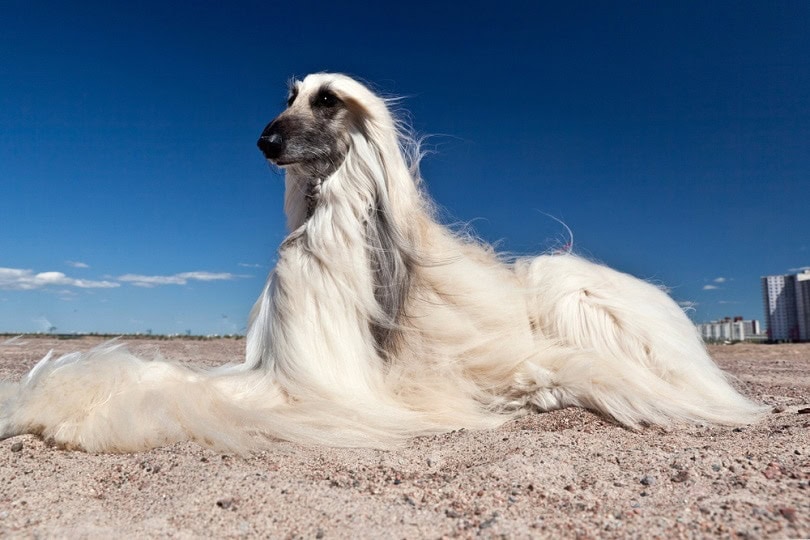
| Origin: | Afghanistan |
| Lifespan: | 10–14 years |
| Height: | 24–27 inches |
The Afghan Hound has a long, flowing coat that makes them popular with pet owners, particularly those that are looking for a relatively hypoallergenic breed. However, they are not usually at the top of traditional intelligence lists because they are independent and have a strong prey drive. Breeders created them for hunting in the rugged terrain of Afghanistan, and while they are skilled hunters with a keen sense of sight, they have difficulty with traditional obedience tasks due to their independent streak.
2. Basset Hound
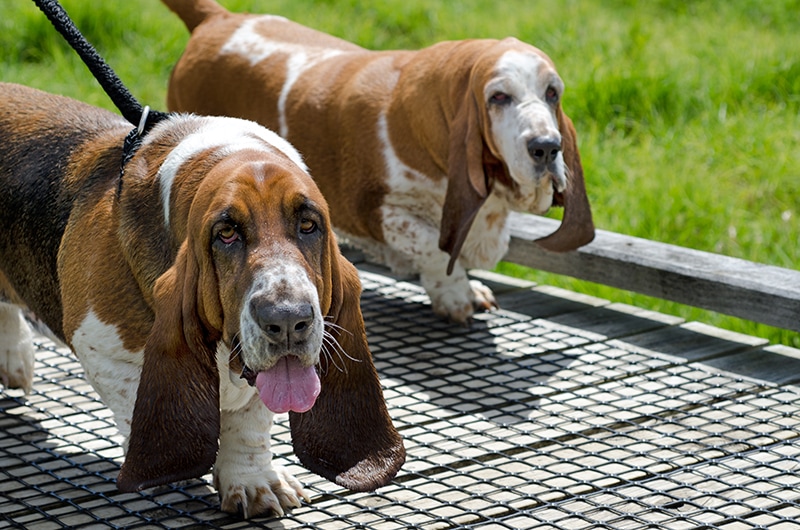
| Origin: | France |
| Lifespan: | 10–12 years |
| Height: | 12–15 inches |
The Basset Hound is easy to identify by their floppy ears, soulful eyes, and exceptional sense of smell. Bred for tracking small game, these dogs have a laidback and affectionate temperament that is popular with many pet owners. While their stubbornness and determination to follow their nose can make training challenging, they compensate with loyalty and a gentle nature.
3. Beagle
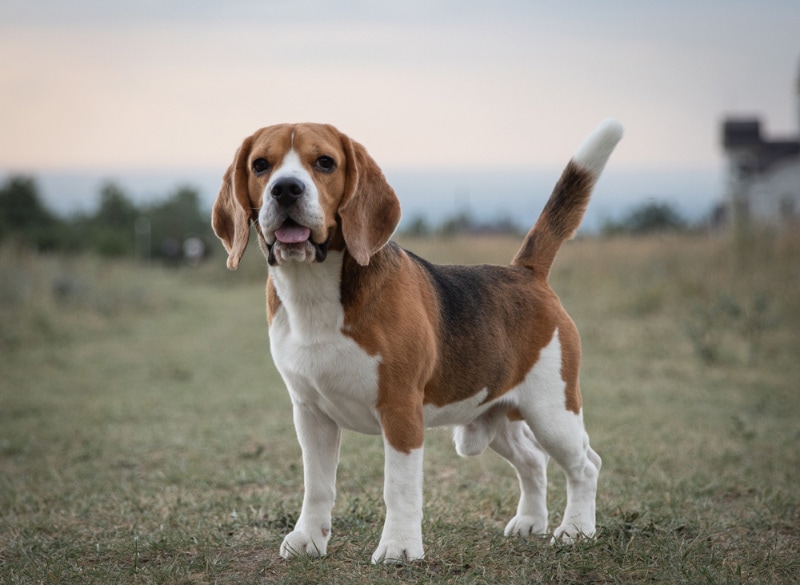
| Origin: | England |
| Lifespan: | 10–15 years |
| Height: | 13–15 inches |
Beagles are friendly and curious, with remarkable scent-detection abilities similar to those of the Basset Hound. Originating as scent hounds, they have an insatiable curiosity that often leads them to follow their nose, sometimes to the detriment of traditional obedience tasks. However, their friendly nature and adaptability make them beloved companions for families and active individuals across the United States.
4. Bulldog
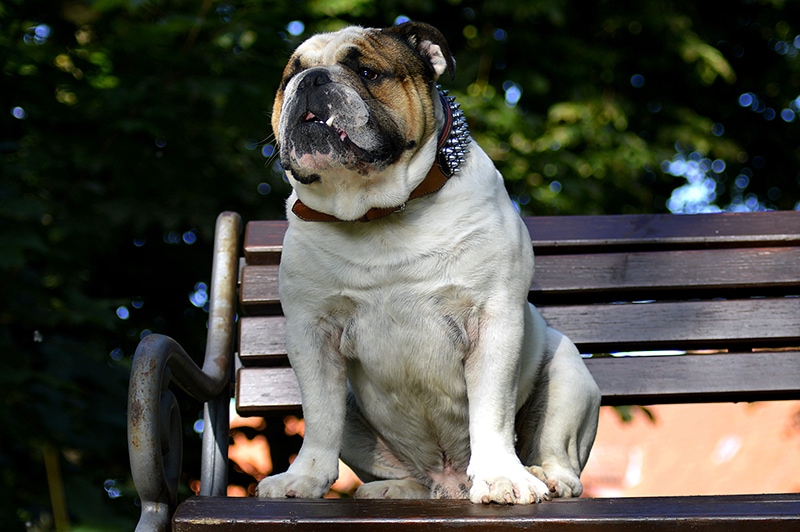
| Origin: | England |
| Lifespan: | 8–12 years |
| Height: | 12–15 inches |
The Bulldog has a sturdy build and a distinctive wrinkled face. Originally bred for bull baiting, these dogs have become affectionate and gentle companions. Their lower rankings in intelligence assessments may stem from their easy going nature, which often leads them to be less motivated when it comes to learning.
5. Chow Chow
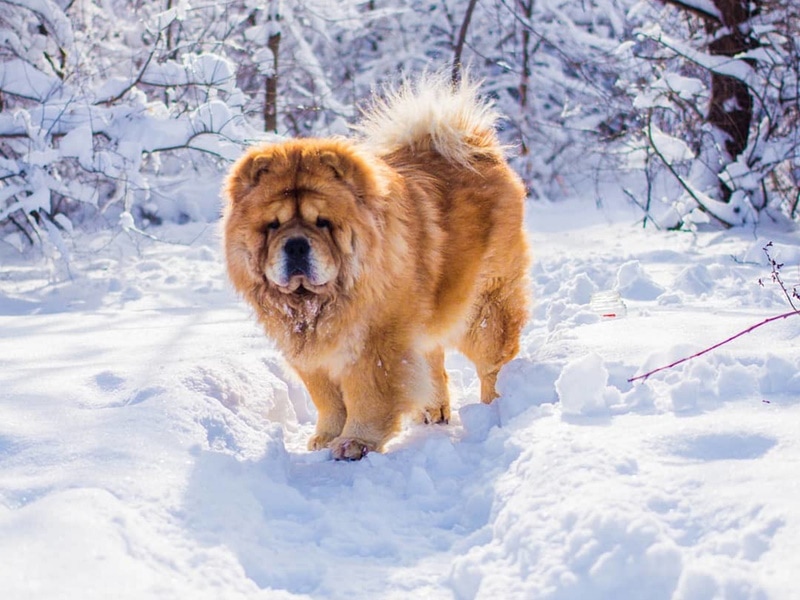
| Origin: | China |
| Lifespan: | 9–15 years |
| Height: | 7–20 inches |
The Chow Chow has a lion-like mane, a unique blue-black tongue, and an aloof demeanor. Bred for guarding and hunting in ancient China, these dogs are strong-willed and independent, making it difficult to keep them focused during training sessions. However, experienced pet owners often find that they make great companions and protectors.
6. Dachshund
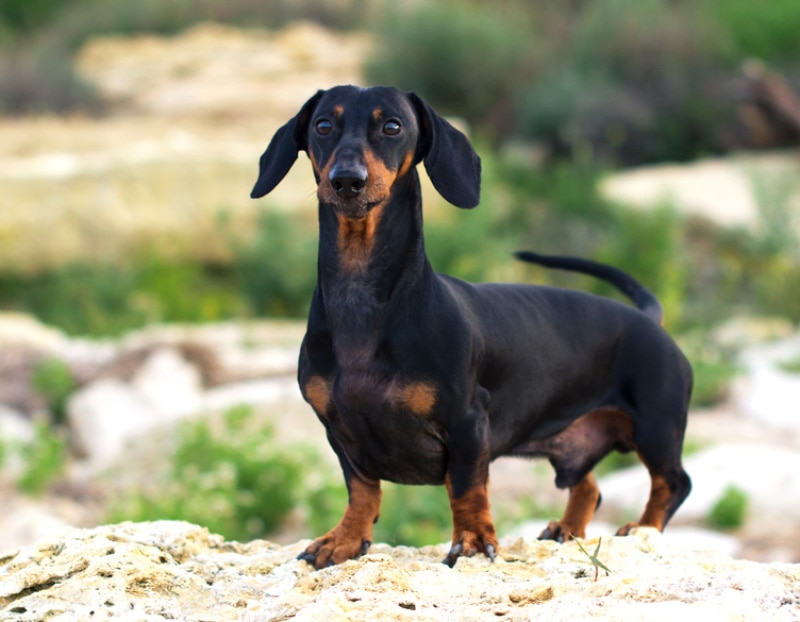
| Origin: | Germany |
| Lifespan: | 12–16 years |
| Height: | 8–9 inches (Miniature), 9–10 inches (Standard) |
The Dachshund, or sausage dog, has an elongated body and a courageous spirit. Breeders created them for hunting small game, and their independent nature and determination can sometimes make them appear less eager to please in traditional training scenarios. However, their unique appearance and loving personality have made them cherished companions for families and individuals.
7. Borzoi
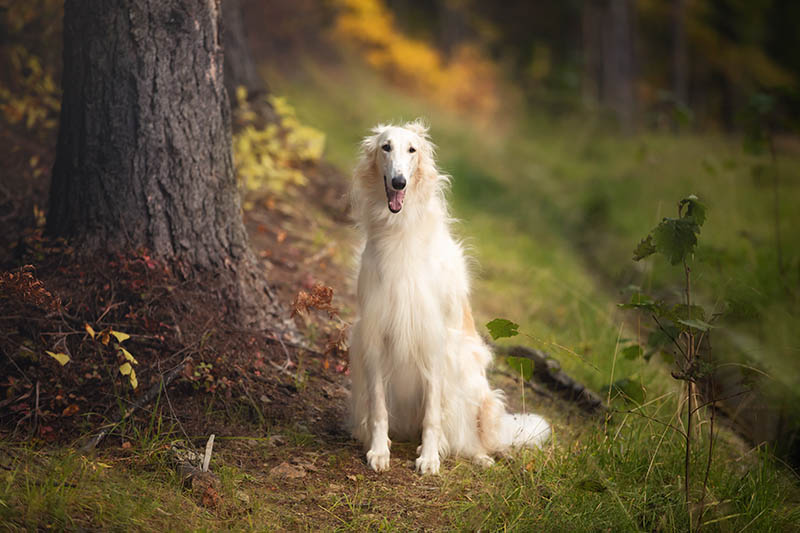
| Origin: | Russia |
| Lifespan: | 9–14 years |
| Height: | 24–28 inches |
The Borzoi, or Russian Wolfhound, is a breed that many owners often use to hunt large game in Russia. They have a calm and independent demeanor that can make them seem disinterested in training sessions, leading to a lower ranking in intelligence tests. However, their long fur and slender head give them a unique appearance, and their affectionate nature makes them popular with pet owners.
8. Basenji
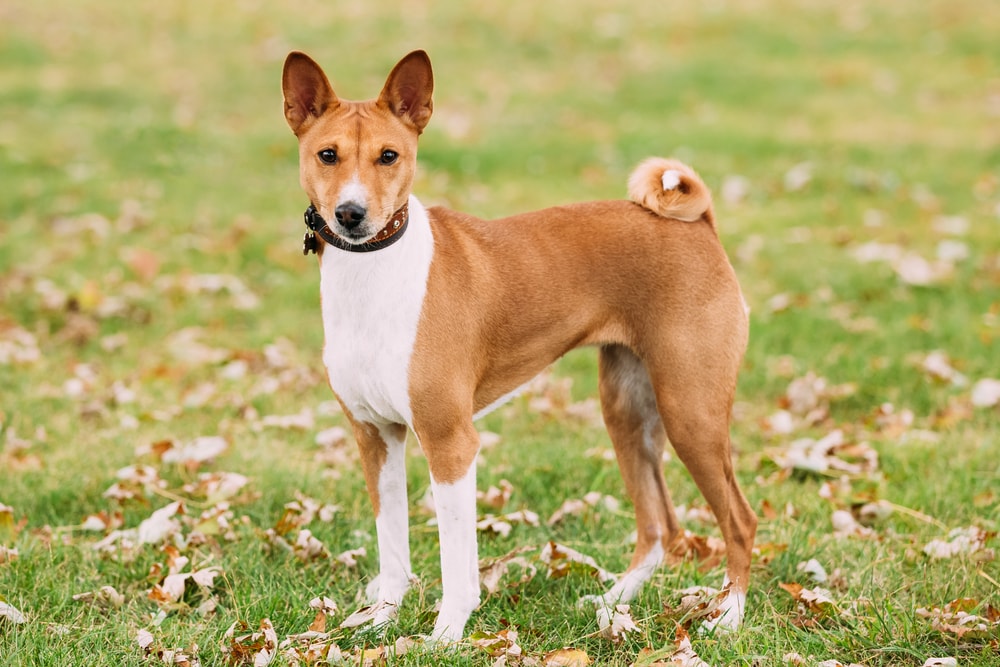
| Origin: | Central Africa |
| Lifespan: | 12–14 years |
| Height: | 16–17 inches |
The Basenji, or “barkless” dog, is extremely popular with pet owners due to their unique yodel-like vocalizations and lack of barking that gives them their name. Breeders created them for hunting in Africa, and they are incredibly independent and self-sufficient. While their low ranking in intelligence tests may stem from their strong-willed nature, Basenjis are clever problem-solvers, known for their cleanliness and agility.
9. Bloodhound
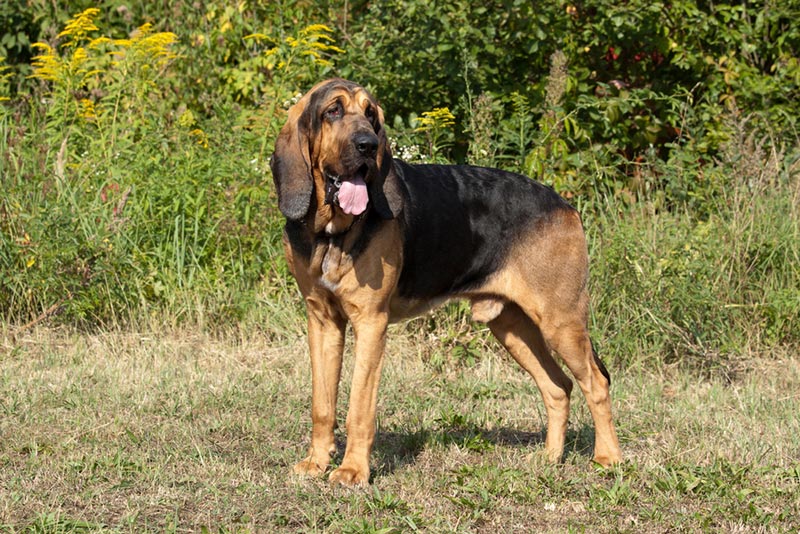
| Origin: | Belgium/France |
| Lifespan: | 10–12 years |
| Height: | 23–27 inches |
The Bloodhound has a remarkable sense of smell and exceptional tracking abilities. Originally bred for tracking scent trails, these dogs possess an intense drive to follow their noses. While their single-minded focus on scents might affect their performance in traditional obedience tasks, their determination and loyalty make them valuable assets in search-and-rescue operations, and their friendly nature makes them great family pets.
10. French Bulldog
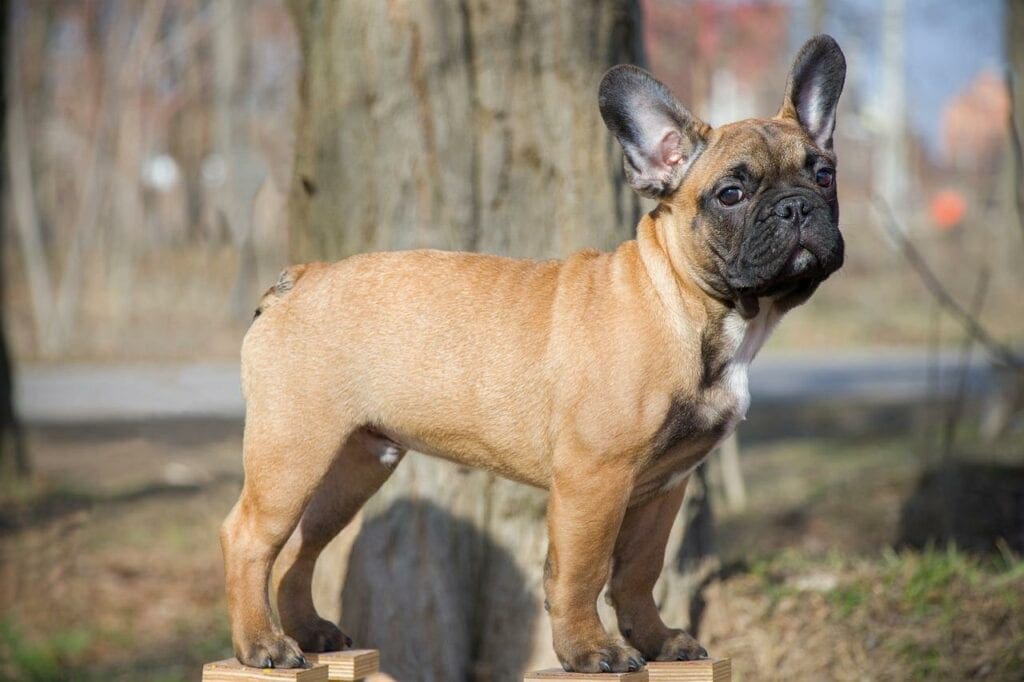
| Origin: | France |
| Lifespan: | 10–12 years |
| Height: | 11–12 inches |
With their bat-like ears and affectionate nature, the French Bulldog has gained popularity as a charming companion breed. Bred for companionship, they have a playful and adaptable personality, and their small size is perfect for apartments. Their low ranking in intelligence assessments might be due to their occasional stubbornness, but their endearing character and ability to form strong bonds make them a wonderful family pet.
11. Lhasa Apso
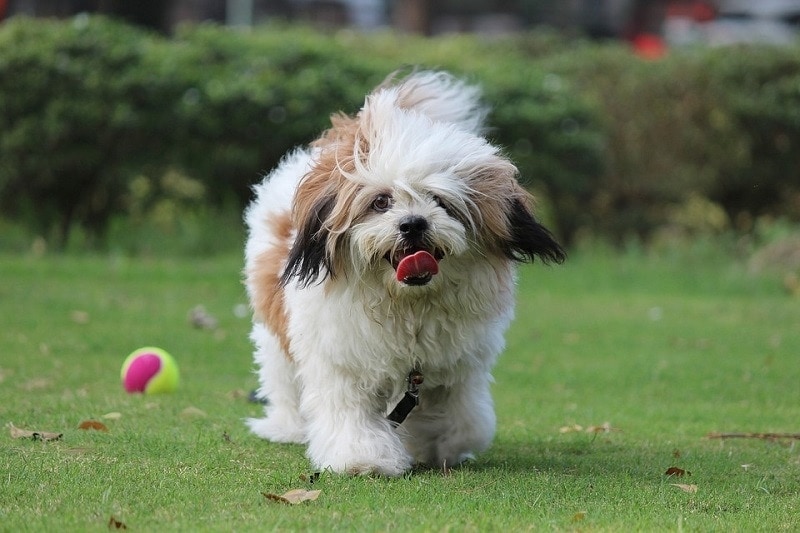
| Origin: | Tibet |
| Lifespan: | 12–15 years |
| Height: | 10–11 inches |
Originally bred as a sentinel and companion in Tibetan monasteries, the Lhasa Apso is known for their long, luxurious coat. These dogs are independent and alert, and possess a protective nature. Their low ranking in intelligence tests might stem from their cautious approach to new situations, but their loyalty and watchful demeanor make them great companions for experienced owners.
12. Mastiff
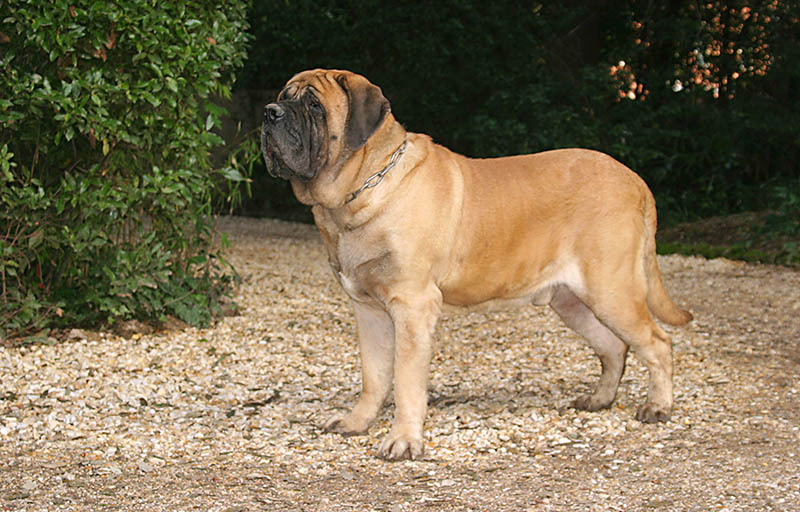
| Origin: | Various regions |
| Lifespan: | 6–12 years |
| Height: | 24.5–33 inches |
Mastiffs, including breeds like the English Mastiff and the Bullmastiff, are giant dogs with a history of guarding and protecting. They have a gentle and protective nature toward their families, and their low rankings in intelligence assessments could be due to their calm and deliberate approach to learning, often leading them to be lovingly labeled as ‘dopey giants’.
13. Pekingese
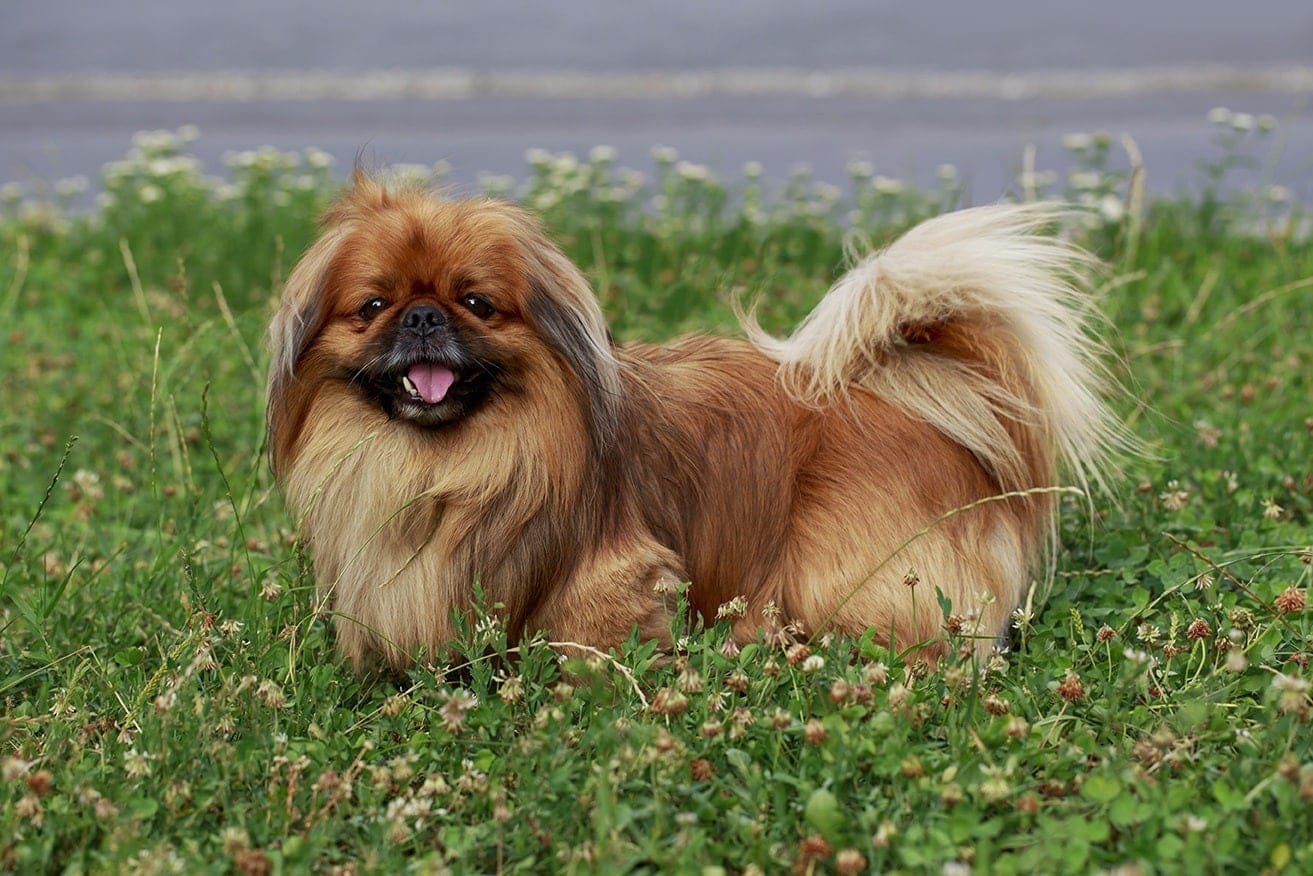
| Origin: | China |
| Lifespan: | 12–14 years |
| Height: | 6–9 inches |
The Pekingese is a small breed with a distinctive squashed face and a regal demeanor. Bred for companionship in ancient China, they have an independent and self-assured personality. Their low ranking in intelligence assessments is likely a reflection of their sometimes-stubborn nature, but their loyalty and lively character make them beloved companions.
14. Pug
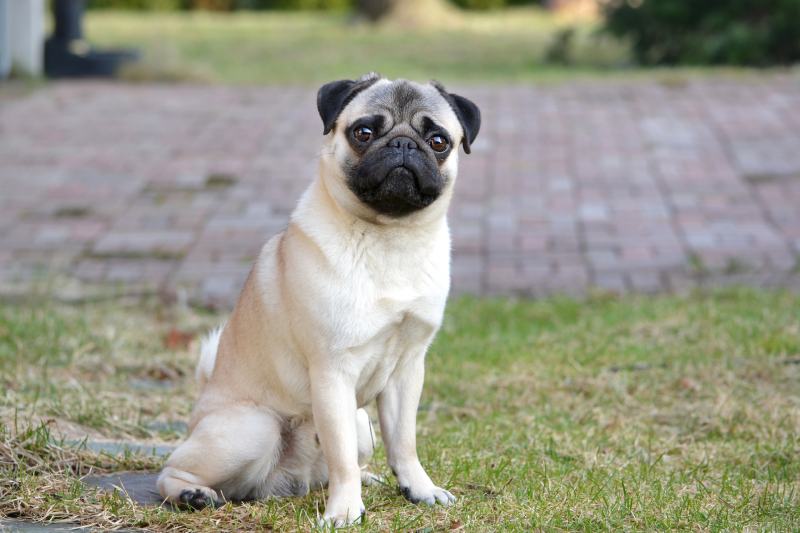
| Origin: | China |
| Lifespan: | 12–15 years |
| Height: | 10–13 inches |
The Pug is a charming and affectionate breed with a distinctive wrinkled face, curled tail, and a playful and mischievous nature. This is a breed that is always looking for something to do, eat, or cuddle, and their distractibility would likely lead to a failing grade in intelligence assessments. Although they may not be known for being clever, Pugs have loving personalities and form strong bonds with their families. They are great at picking up on subtle cues from their owners, and are always ready to provide emotional support when needed.
15. Shih Tzu
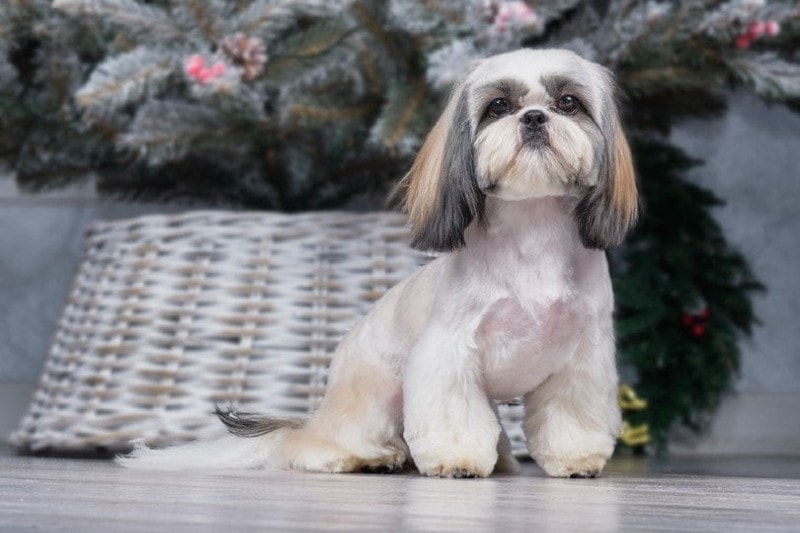
| Origin: | Tibet |
| Lifespan: | 10–18 years |
| Height: | 9–10.5 inches |
The Shih Tzu has a long flowing coat and a friendly disposition. They also have a regal and dignified demeanor, despite their small size. While their rankings in traditional intelligence tests might be modest due to being independent and easily distracted, Shih Tzus are loyal, affectionate, and playful.
16. Skye Terrier
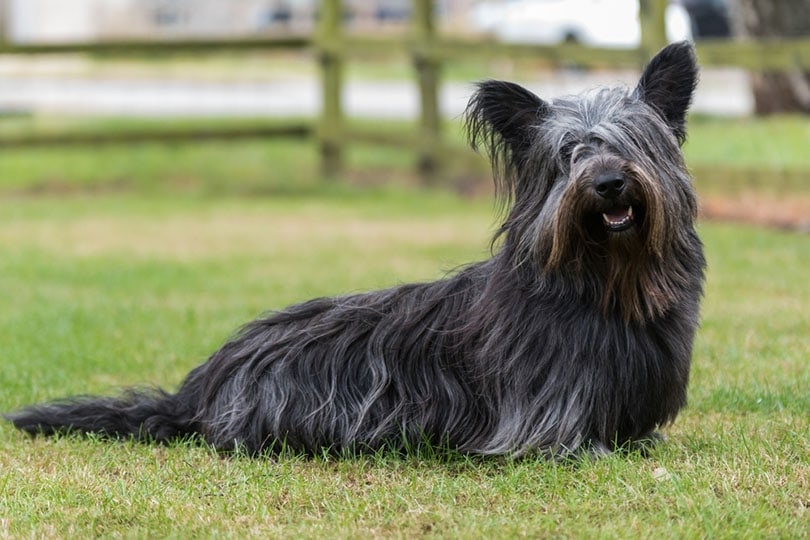
| Origin: | Scotland |
| Lifespan: | 12–14 years |
| Height: | 9–10 inches |
The Skye Terrier is a small breed with a long coat and a history of working as a versatile hunting and guarding dog in Scotland. They are known for their loyalty and devotion to their families, though they tend to be independent and find it difficult to keep focused on training.
17. Shiba Inu
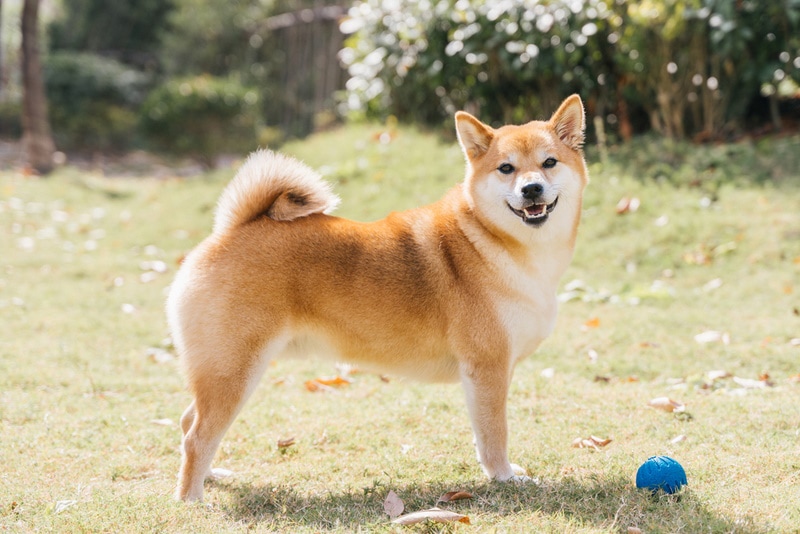
| Origin: | Japan |
| Lifespan: | 12–15 years |
| Height: | 13.5–16.5 inches |
The Shiba Inu is a distinctive and ancient breed from Japan, known for their fox like appearance and spirited personality. Bred for hunting and companionship, they possess a strong-willed and independent nature, making them difficult for new pet owners to train. However, their loyalty and strong character make them a fascinating companion for the right owner.
18. Tibetan Spaniel
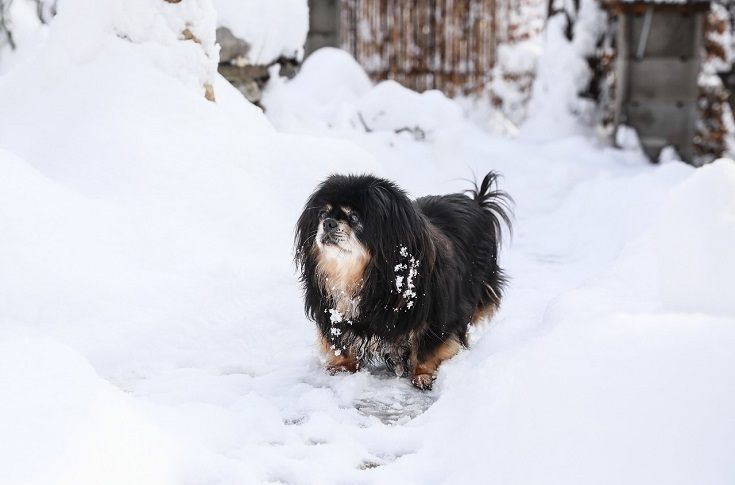
| Origin: | Tibet |
| Lifespan: | 12–15 years |
| Height: | 10 inches |
The Tibetan Spaniel is a small breed with a history as a companion and sentinel dog in Tibetan monasteries. They have a loving and lively personality and a strong protective instinct. While their rankings in intelligence tests might not be the highest due to their independence, Tibetan Spaniels are clever and adaptable and form close bonds with their families.
How Is Dog Breed Intelligence Classified?
The following categories are used to evaluate and rank breeds based on their performance in different settings.
Working/Herding/Utility Groups
Dogs that can perform tasks like herding, guarding, hunting, or assisting humans in various jobs are often considered intelligent within their specialized roles. Breeds in the working, herding, and utility groups are generally easy to train and have good problem-solving skills.
Obedience and Working Aptitude
The obedience and working aptitude classifications focus on a dog’s ability to learn and follow commands and perform tasks like search and rescue, service work, and police or military tasks. Breeds that excel in obedience trials and working competitions are often considered to be intelligent.
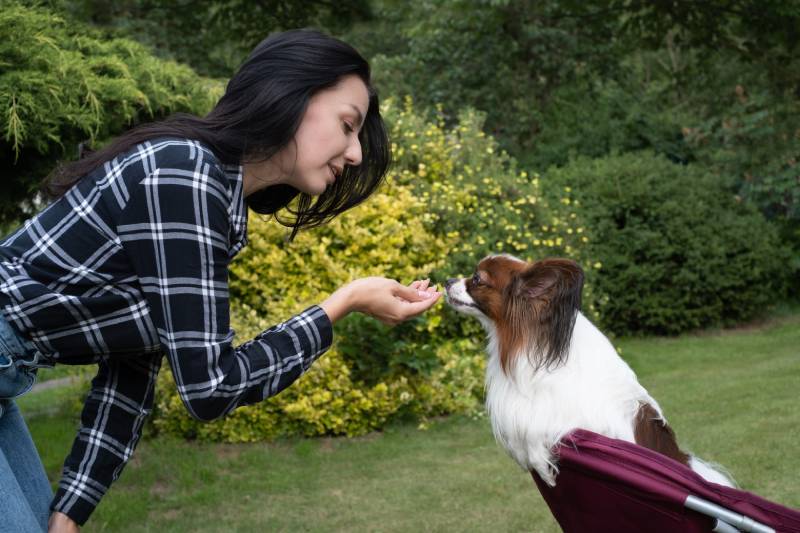
Problem-Solving Skills
Researchers have attempted to measure intelligence by assessing a dog’s problem-solving abilities and adaptability to new situations and how quickly they can learn new tasks. Dogs that can quickly understand and solve novel problems are often considered more intelligent.
Canine IQ Tests
Like human IQ tests, canine IQ tests measure a dog’s general cognitive abilities, including memory, reasoning, and problem solving. However, creating a universally applicable IQ test for dogs is challenging due to their diverse backgrounds and skills.
Frequently Asked Questions
Which Dog Breed Is the Smartest?
The “smartest dog” concept varies, and can depend on the criteria used to measure intelligence. That said, breeds like Border Collies, Poodles, and German Shepherds are often considered highly intelligent due to their trainability and problem-solving abilities.
Are There Different Types of Dog Intelligence?
Several dog intelligence categories exist, including problem solving, social intelligence, adaptive learning, and specialized skills related to breed purpose.
What Factors Influence a Dog’s Intelligence?
Genetics, early socialization, training methods, and individual personality all play a role in a dog’s intelligence. A well-trained dog of any breed can demonstrate impressive problem-solving and learning abilities.
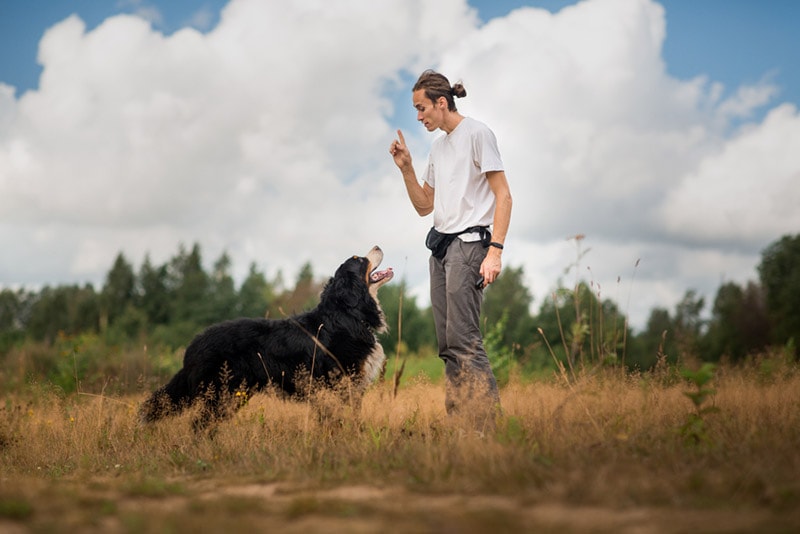
Can Intelligence Vary Within a Breed?
Yes, intelligence can vary significantly within a breed. Individual dogs have unique personalities, strengths, and weaknesses that can influence their performance in various tasks.
Do Mixed Breed Dogs Have Lower Intelligence?
Mixed-breed dogs can have a wide range of characteristics, including intelligence. Their abilities depend on their genetic makeup, individual experiences, and the breeds making up their heritage.
Conclusion
Several dog breeds, including the Afghan Hound, Basset Hound, and Beagle, do not score highly in intelligence scores. That said, these scores are often more indicative of the dog’s desire to learn rather than their actual ability. Dogs that choose their natural jobs, such as tracking prey or herding livestock, over attending training sessions, will automatically score lower in intelligence, purely because it’s harder for trainers to keep them focused. Still, with patience and consistency, they likely can learn many of the same commands.
Featured Image Credit: mezzotint, Shutterstock






